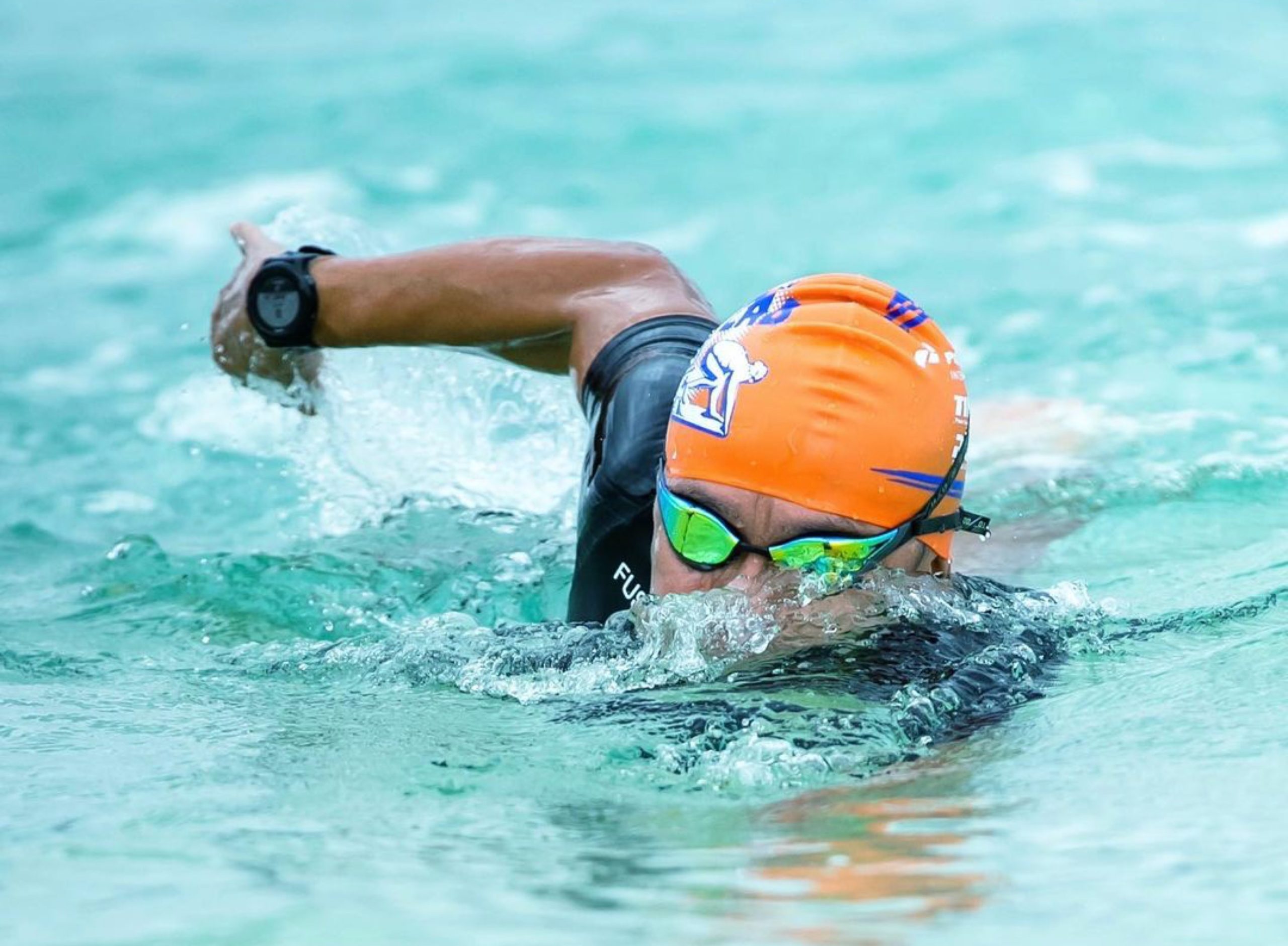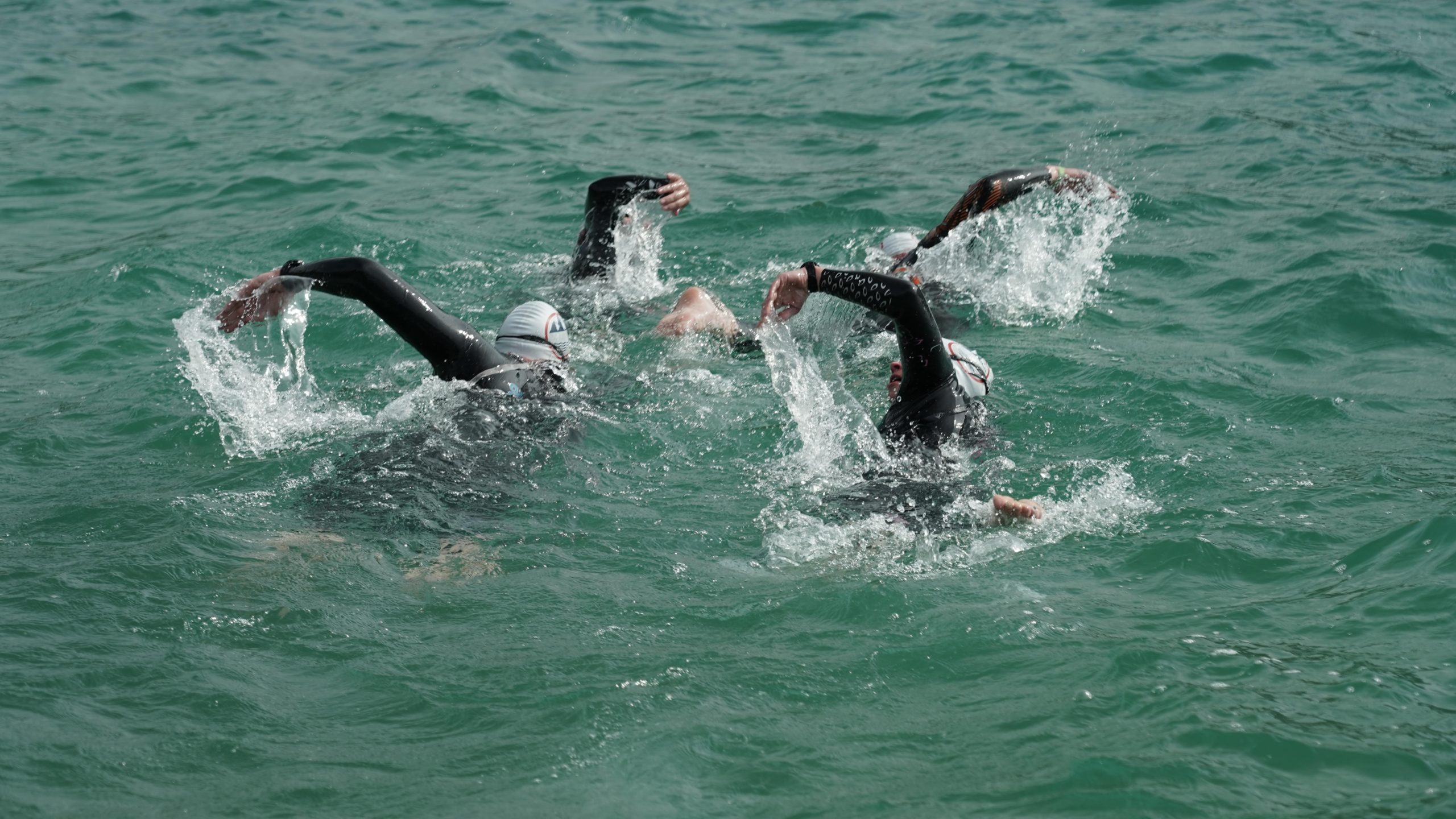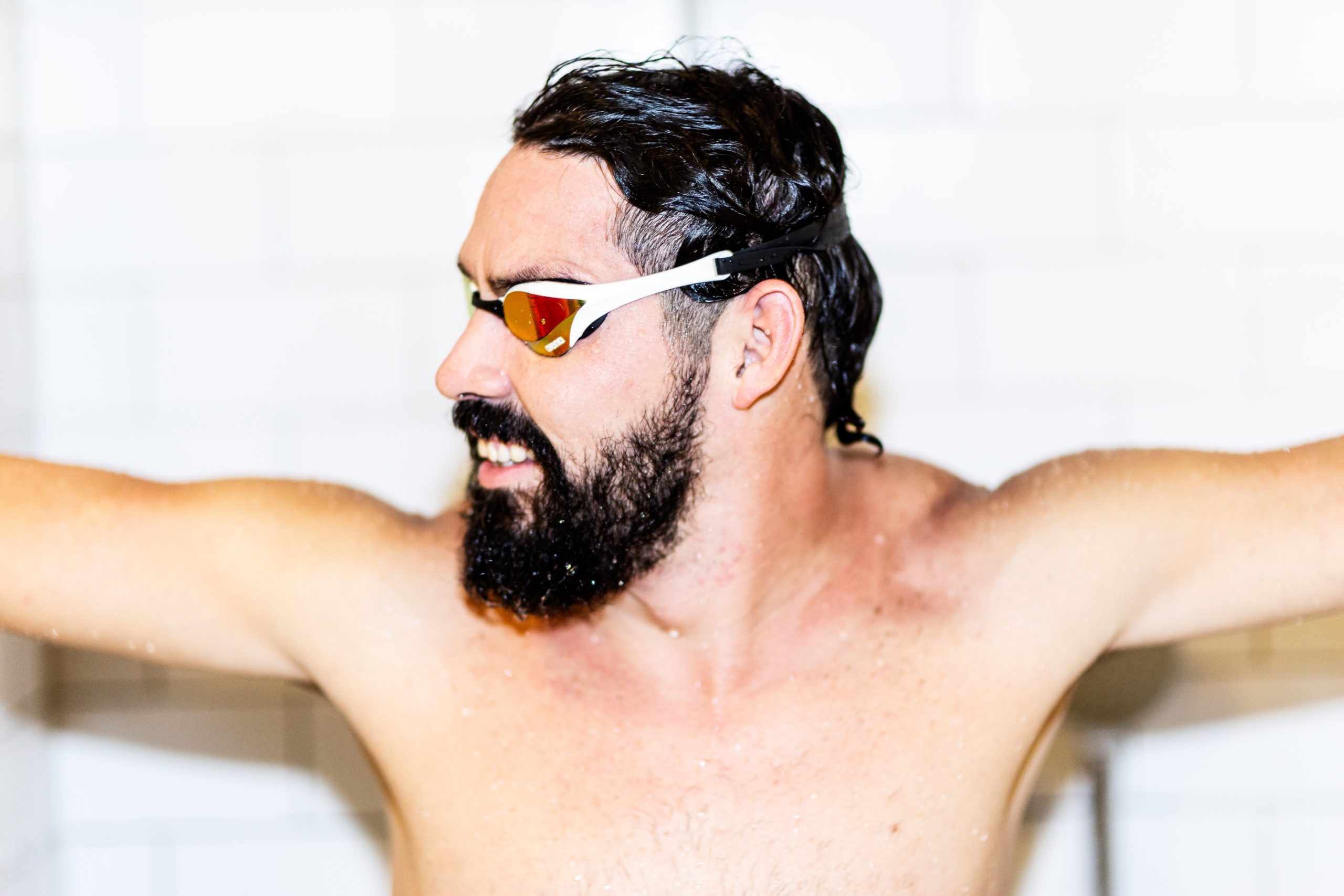5 Skills to Swim Faster in Open Water
Elite Swimmer and Coach Mike Trees shares 5 key skills to help increase your speed while swimming in open water.

As triathletes we have our work cut out for us. Why try to excel in one sport when you can take on three at the same time? For most of us, swimming is the least natural of the three disciplines. The vast majority of age group triathletes learn to formally swim as adults. Perfecting breathing, form and technique in a pool is challenging and requires a great deal of work. Adding the element of open water can complicate matters.
As the race season approaches, the transition to open water begins. Just like learning to ride a bike outside is a skill, learning the proper swimming techniques in open water is a skill as well.
Trees’ entrance into the swim discipline was later than most. “I learned to swim at around 24 years of age, so as a pro triathlete I was always one of the weaker swimmers in the field,” said Trees
Swimming is a sport of technique. Even someone with a massive VO2 engine like Trees is not an exception to this rule. He was able to bridge the gap, getting his 1500m swim time from 30 minutes (1:50 per 100 yards) down to 18:33 (1:08 per 100 yards).
His crowning achievement came when he won the World Masters Games 1,500m OWS title in Auckland 2017. “This is the achievement I am proudest of, I proved to myself that I had finally learned to swim in open water,” shared Trees.
Trees’s success is a combination of hard work, consistency and focus on skills development.
Now he wants to share those skills so that others can see a similar progression.

1. Time in open water is paramount
Like most things in life, the more time spent doing something, the better you’ll become. Open water swimming is no different, it is a skill to be developed.
Learning to maneuver in a wetsuit, adjust your orientation in cloudy water as well as swimming without a wall, are all elements that must be practiced. The more time you spend in open water, the better.
You may also experience some open water panic, which is quite normal for all levels of athletes. More time in the water is the best way to address this in addition to some mental strengthening work. See the Open Water Panic guide for more on that.
Access to open water may be hard to come by, but if possible, try to identify a lake, pond, ocean to swim in once a week once the weather conditions permit.
2. Nail the start: Dolphin Dives
Many races start with a beach run into the water. The goal is to transition from standing vertically on dry land to swimming horizontally in water, deep enough to swim as fast as possible.
I recommend learning the dolphin dive:
- Step 1: As you run into the water, keep running until you cannot bring your knees out of the water, and then dive in.
- Step 2: Dive towards the bottom. With both hands and one foot, push off from the bottom of the sea/lake floor. Then bring your arms out of the water and begin with a butterfly stroke.
- Step 3: Dive back down to the sea bed again, and repeat until you cannot dive down to the sea bed any more.

3. Sighting: Swimming straight can be quicker than swimming fast
One of the easiest ways to achieve a faster swim in open water is to simply avoid adding unnecessary distance. Sighting can help you do this.
Unlike the pool where you have clear water, a black line and lane ropes to guide you, the open water is fast moving and typically unmarked aside from turn buoys spaced hundreds of yards apart. It’s easy to get off course.
Set your markers: Try not to rely solely on turn buoys. At sea level, swim buoys on the surface are hard to sight and can easily disappear with swells. Instead, use large fixed objects that are in line with the buoys/course.
Before the race starts, stand by the swim start and assess the course. Look for large, stand out, fixed objects on the horizon to use as a marker. This could be a building, structure or large unique trees.
Alligator eyes: Looking up and out of the water is a technique to be practiced as well.
- Step 1: Time your look at the start of the catch phase of your stroke. You’ll want the phase of the stroke with the strongest propulsion. For single side breathers, this is typically on the breathing side. Combine this with a stronger kick on the stroke for an extra push.
- Step 2: Once your stroke is initiated, raise your eyes out of the water. Try to bring the waterline to the bridge of your nose so that only your goggles break the surface. (Do not bring your full face out of the water.)
- Step 3: Take a quick look to make sure you are still lined up with your fixed marker. You can then turn, finish your stroke or breathe as you normally would.
This entire process should only happen in a single arm stroke.
A good drill for this is head up swimming. In the pool, perform 25 or 50 yard sets with your head up and out of the water the entire time. You’ll need to have a stronger kick and push on the catch to keep your head up. It is tiring but the payoff is worth the effort.
The goal with sighting is to take regular quick snapshots of your course throughout the swim. Novice swimmers should look up every second stroke. This sounds like a lot, but swimming straight must be your priority. More experienced swimmers can progress to six to 10 strokes before looking up.

4. To draft or not to draft
Drafting can help you gain speed in the water. It’s proven that drafting behind another swimmer can reduce drag by up to 20% and save a tremendous amount of energy. This is legal, and if you are a good swimmer, I highly recommend it.
You can experience a drafting effect from behind and alongside another swimmer. Maintain a distance of two feet from the lead swimmer’s toes and one to two feet in width/two to three feet in distance from the lateral swimmer.
Be wary of drafting on race day. If the person isn’t sighting well, they may lead you off course, adding unnecessary distance and time to your swim. Unless you know them and are confident they can swim in a straight line, do not attempt to draft on race day.

5. Goggles
Leaks, fogging or discomfort in your goggles can make or break your swim. It’s important to make sure you have a pair of well-fitted goggles. This comes down to a matter of personal preference so try different pairs until you find one that works for you.
Anti fog applied just before your race or swim can help mitigate some fogging later on, though they are not perfect. You can also try putting a small amount of water inside the goggles so it sloshes around while you swim and stops them from fogging up.
Tinted goggles should be worn on sunny days to mitigate glare. Clear/colored goggles are best for dark, cloudy days. You may consider owning one pair of each.
Did you know a wetsuit can save you more time than aero wheels? And it is so much cheaper. It is often an over looked weapon in your triathlon armory and the subject of my next article.
…
Mike Trees is a running/triathlon coach (NRG Coaching) and all around elite endurance athlete. As a runner, Mike competed at Britain’s top sports University, Loughborough. He went on to race and coach all over the world, most recently in Japan. After 15 years racing as a professional triathlete, Mike eventually took up coaching triathlon and has coached Olympians and world champions, as well as National level and top amateurs.

